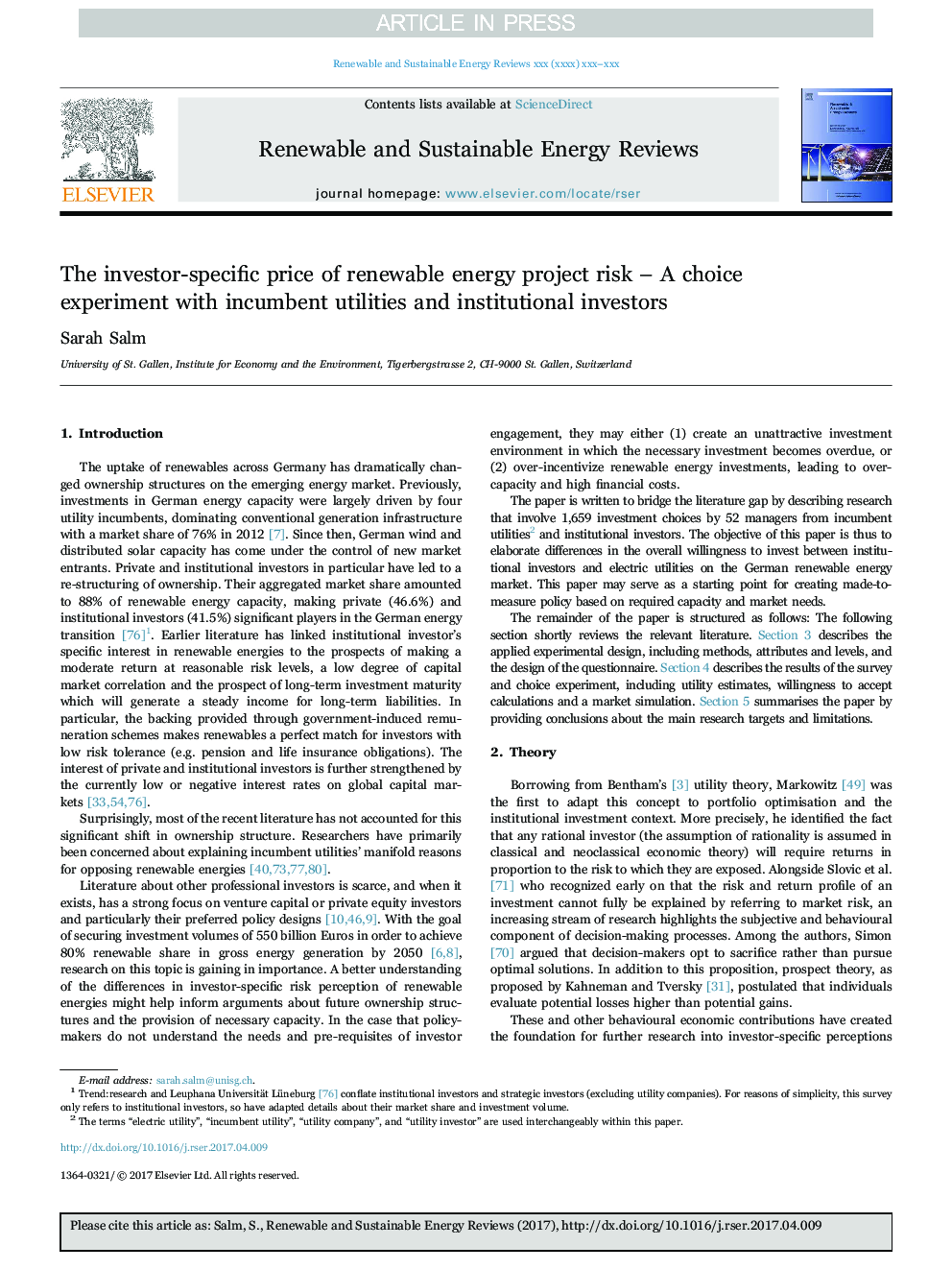| Article ID | Journal | Published Year | Pages | File Type |
|---|---|---|---|---|
| 8112478 | Renewable and Sustainable Energy Reviews | 2018 | 12 Pages |
Abstract
Renewable energy investments in Germany have recently soared, trebling the output of wind and solar power generation in only ten years. While incumbent utilities have lagged behind in terms of investment, new entrants have significantly contributed to this growth. Existing literature has primarily focused on explaining the lethargy of incumbents' former investments, although there is a growing need to investigate recent investment drivers to secure the necessary power plant capacity at a moderate cost from incumbents and new entrants alike. To close this gap, a choice experiment involving 1,659 investment choices by 52 European professional investors was conducted. In significant contrast to the case with altruistic investors, this survey underlines the importance of using financial incentives to attract professional investors. Given full exposure to electricity price risk, incumbent utilities would facilitate projects at a 3.04% risk premium, whereas institutional investors demand 6.61%. Generally, incumbent utilities and institutional investors are equally attracted by low-risk projects. However, when risk increases, institutional investors are more hesitant to become involved, while incumbent utilities confidently navigate these higher risk projects.
Keywords
Related Topics
Physical Sciences and Engineering
Energy
Renewable Energy, Sustainability and the Environment
Authors
Sarah Salm,
